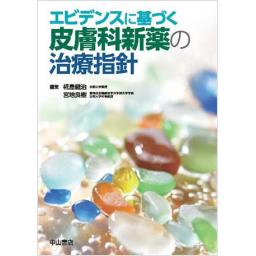1) 日本皮膚科学会, 日本アレルギー学会, アトピー性皮膚炎診療ガイドライン作成委員会 (加藤則人ほか). アトピー性皮膚炎診療ガイドライン 2018. 日皮会誌 2018 ; 128 : 2431-502.
2) Katayama I, et al. Japanese guidelines for atopic dermatitis 2017. Allergol Int 2017 ; 66 : 230-47.
3) Honda T, Kabashima K. Reconciling innate and acquired immunity in atopic dermatitis. J Allergy Clin Immunol 2020 ; 145 : 1136-7.
5) Blauvelt A, et al. Long-term management of moderate-to-severe atopic dermatitis with dupilumab and concomitant topical corticosteroids (LIBERTY AD CHRONOS) : a 1-year, randomised, double-blinded, placebo-controlled, phase 3 trial. Lancet 2017 ; 389 : 2287-303.
6) Guttman-Yassky E, et al. Dupilumab progressively improves systemic and cutaneous abnormalities in patients with atopic dermatitis. J Allergy Clin Immunol 2019 ; 143 : 155-72.
7) Mobus L, et al. Atopic dermatitis displays stable and dynamic skin transcriptome signatures. J Allergy Clin Immunol 2021 ; 147 : 213-23.
9) Guttman-Yassky E, et al. Efficacy and Safety of Lebrikizumab, a High-Affinity Interleukin 13 Inhibitor, in Adults With Moderate to Severe Atopic Dermatitis : A Phase 2b Randomized Clinical Trial. JAMA Dermatol 2020 ; 156 : 411-20.
11) Kabashima K, et al. Nemolizumab in patients with moderate-to-severe atopic dermatitis : Randomized, phase II, long-term extension study. J Allergy Clin Immunol 2018 ; 142 : 1121-30.e7.
12) Kabashima K, et al. Trial of Nemolizumab and Topical Agents for Atopic Dermatitis with Pruritus. N Engl J Med 2020 ; 383 : 141-50.
13) Nakagawa H, et al. Efficacy and safety of topical JTE-052, a Janus kinase inhibitor, in Japanese adult patients with moderate-to-severe atopic dermatitis : a phase II, multicentre, randomized, vehicle-controlled clinical study. Br J Dermatol 2018 ; 178 : 424-32.
14) Nakagawa H, et al. Delgocitinib ointment, a topical Janus kinase inhibitor, in adult patients with moderate to severe atopic dermatitis : A phase 3, randomized, double-blind, vehicle-controlled study and an open-label, long-term extension study. J Am Acad Dermatol 2020 ; 82 : 823-31.
15) デルゴシチニブ軟膏 (コレクチム軟膏 0.5%) 安全使用マニュアル作成委員会. 日本皮膚科学会ガイドライン デルゴシチニブ軟膏 (コレクチム軟膏 0.5%) 安全使用マニュアル. 日皮会誌 2020 ; 130 : 1581-8.
16) Nezamololama N, et al. Emerging systemic JAK inhibitors in the treatment of atopic dermatitis : a review of abrocitinib, baricitinib, and upadacitinib. Drugs Context 2020 ; 9 : 2020-8-5.
17) Bissonnette R, et al. Crisaborole and atopic dermatitis skin biomarkers : An intrapatient randomized trial. J Allergy Clin Immunol 2019 ; 144 : 1274-89.
18) Peppers J, et al. A phase 2, randomized dose-finding study of tapinarof (GSK2894512 cream) for the treatment of atopic dermatitis. J Am Acad Dermatol 2019 ; 80 : 89-98.e3.
19) Simpson EL, et al. Baricitinib in patients with moderate-to-severe atopic dermatitis and inadequate response to topical corticosteroids : results from two randomized monotherapy phase III trials. Br J Dermatol 2020 ; 183 : 242-55.
